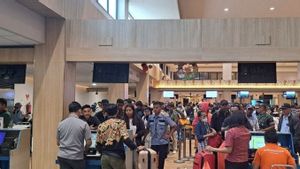JAKARTA - The Indonesian Palm Oil Entrepreneurs Association (GAPKI) said the government had succeeded in creating a new economic climate center through the people's palm oil rejuvenation program (PSR) through a partnership route.
"The development of palm oil through this partnership pattern involves partner companies as core and plant farmers as plasmas that have started since the 1980s," said GAPKI General Chair Eddy Martono, quoted from Antara, Thursday, April 25.
He mentioned that initially the pattern used the Plantation People's Core Company (PIR-BUN) system which was then followed by the Transmigration People's Core Pattern (PIR-Trans) and the Primary Cooperative Credit Pattern for Its Members (PIR-KKPA).
"Yang kemudian kita kekenalkan program PSR atau replanting, yakni mengganti pohon sawit yang tua dan rusak dengan tanaman muda yang tercertifikasi," ujarnya.
Eddy explained that in the implementation of the PSR program, oil palm farmers were given financial assistance of Rp. 30 million per hectare as capital for oil palm rejuvenation which was budgeted through the oil palm plantation fund management agency (BPDP-KS).
He said the partnership-based funding was part of the development of palm oil, and had encouraged the rapid development of new areas due to the growth of new economic centers based on oil palm plantations.
The farmers who received the financial assistance, he said, used funds for oil palm rejuvenation through the company's guidance as partners until they finally got the harvest.
Eddy said that with the success of the partnership-based PSR program, it had given birth to oil palm farmers who were independent so that it could be said that a new economic center was born in the household of oil palm farmers.
SEE ALSO:
The head of the Gajah Mada Village Unit Cooperative (KUD), Kotabaru Regency, South Kalimantan, Sakino revealed that while participating in the PSR program, his party had been assisted through funding because it was capitalized to start from buying seeds to replace old and unproductive palm oil plants.
"We just enjoy the results after the oil palm bears fruit, of course we as farmers are helped. Moreover, in Gajah Mada KUD there are thousands of members with a total oil palm area of around 7,200 hectares, of the total area of this land receiving oil palm rejuvenation assistance of Rp. 30 million per hectare," said Sakino.
The English, Chinese, Japanese, Arabic, and French versions are automatically generated by the AI. So there may still be inaccuracies in translating, please always see Indonesian as our main language. (system supported by DigitalSiber.id)
















